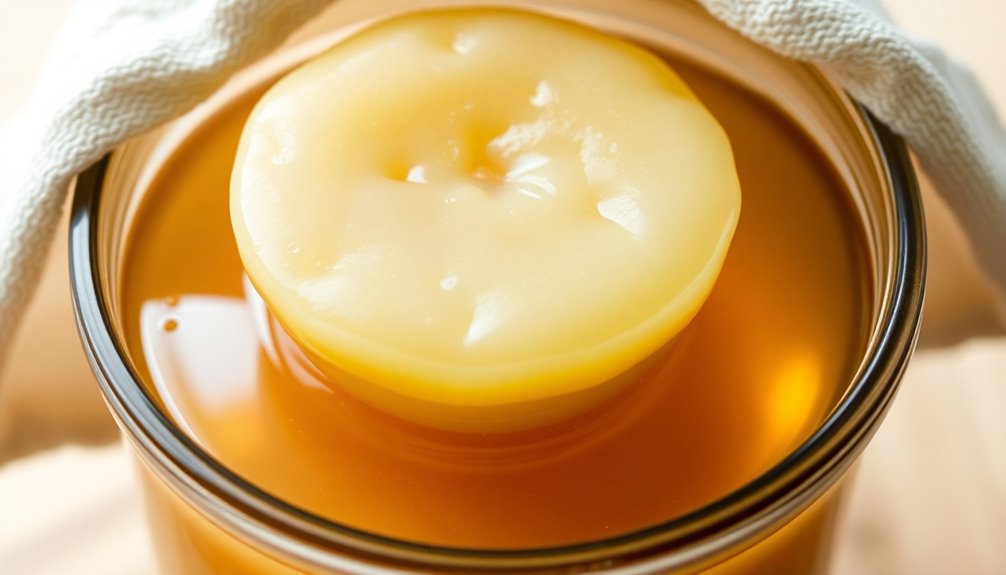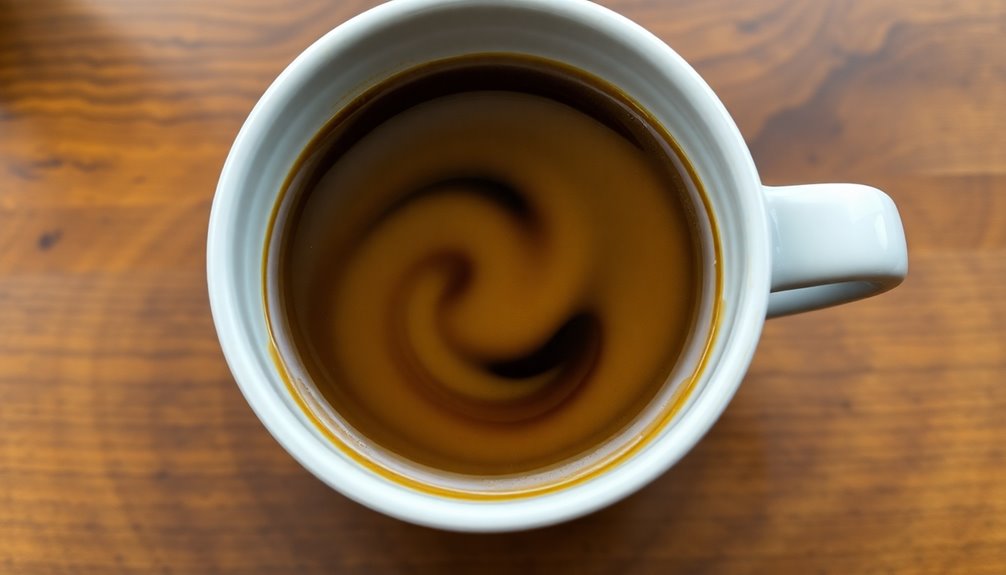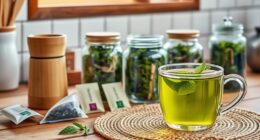You don't need starter tea to brew your own kombucha at home. All you need are a few basic ingredients – water, sugar, and tea. Plus, you'll want to get your hands on a SCOBY, the culture that transforms those simple elements into delicious, fizzy kombucha. First, steep your sweetened tea, then add the SCOBY and let it ferment for 7-30 days. Taste it periodically to get the flavor just right. Once it's ready, bottle it up and let it undergo a secondary fermentation to build carbonation. With a little time and patience, you'll have tasty homemade kombucha without any special starters. And that's just the beginning…
History

Although kombucha originated in Northeast China around 220 B.C., it was referred to as the "Tea of Immortality" due to its reputed health benefits.
Over centuries, the SCOBY, the symbiotic culture of bacteria and yeast used in kombucha, evolved through hand-to-hand transmission among home brewers.
Kombucha then spread to Russia and Europe in the early 20th century, gaining popularity as a health tonic.
Historical accounts suggest that kombucha was consumed for its purported detoxifying and energizing effects, fostering a cultural tradition of fermentation.
The modern kombucha movement began in the 1990s in the United States, leading to a surge in commercial production and consumer interest in fermented foods.
Recipe

Making kombucha without a starter tea is a simple and cost-effective way to brew your own probiotic-rich beverage at home. This method utilizes either unflavored store-bought kombucha or distilled white vinegar as a substitute for the traditional starter liquid.
Begin by brewing a strong black or green tea. Dissolve 120g (1/2 cup + 1 tablespoon) of granulated sugar in 4 cups of hot water, then steep 4-6 tea bags or an equivalent amount of loose-leaf tea. Allow the tea mixture to cool completely to room temperature before proceeding.
Ingredients:
- 4 cups water
- 120g (1/2 cup + 1 tablespoon) granulated sugar
- 4-6 tea bags or equivalent loose-leaf tea
- 1/2 cup unflavored store-bought kombucha or 1/2 cup distilled white vinegar
- 1 SCOBY (Symbiotic Culture of Bacteria and Yeast)
Instructions:
Pour the cooled sweet tea into a fermentation vessel, such as a glass jar or ceramic crock.
Add the SCOBY and either the 1/2 cup of unflavored kombucha or the 1/2 cup of distilled white vinegar.
Cover the vessel with a breathable cloth and secure it with a rubber band or string.
Allow the mixture to ferment at room temperature for 7-14 days, tasting it daily after the first week to achieve your desired level of tartness and carbonation.
Cooking Steps

To make kombucha without starter tea, you'll first need to obtain a SCOBY from a friend or purchase one online.
Then, you'll create the tea base by boiling water, steeping tea bags, and dissolving sugar.
Once the tea has cooled, you'll transfer it to a fermentation vessel, add the SCOBY, and let the mixture ferment for 7-14 days until it reaches your desired flavor.
Step 1. Obtain Scoby From Fermented Tea

To obtain a SCOBY from fermented tea, you'll first need to purchase unflavored, raw store-bought kombucha that contains live cultures.
Pour about 2 cups of the kombucha into a clean glass jar, then add 2-3 cups of sweetened tea made from boiling water, sugar, and black or green tea.
Let the tea cool to room temperature before combining it. Cover the jar with a breathable cloth secured with a rubber band to protect it from contaminants while allowing air circulation.
Place the jar in a warm, dark spot between 70-85°F and wait 1-4 weeks for a SCOBY to form on the surface.
Once it's about 1/4 inch thick, you can use it for brewing kombucha and save some of the fermented tea as starter for future batches.
Step 2. Add Fresh Tea and Sugar

Begin by boiling 4 cups of filtered water to ensure no chlorine or contaminants are present, which could interfere with fermentation.
Add 120g (about ½ cup + 1 tablespoon) of granulated sugar to the boiling water, stirring until fully dissolved to create a strong sweet tea base for fermentation.
Steep 4-6 tea bags of black or green tea (or an equivalent amount of loose leaf tea) in the hot water for 5-15 minutes to extract optimal flavor and nutrients for the SCOBY.
Allow the sweet tea mixture to cool to room temperature, then transfer it to a sanitized fermentation vessel and proceed with adding a SCOBY and any alternative starter such as unflavored store-bought kombucha.
Step 3. Ferment the Tea and Sugar Mixture

Once the sweetened tea has cooled to room temperature, transfer it to your sanitized fermentation vessel. This is where the real magic of brewing kombucha begins.
Gently place the SCOBY, your kombucha starter, into the vessel. Cover it with a breathable cloth to allow air circulation while keeping contaminants out.
Over the next 7-30 days, the SCOBY will feast on the tea and sugar, converting them into vinegar and other beneficial compounds.
Add a cup of unflavored store-bought kombucha or half a cup of distilled white vinegar if you lack starter tea, ensuring the proper acidity for fermentation.
Be patient and let the SCOBY work its wonders – soon, you'll have a delicious and healthy kombucha brew!
Step 4. Transfer to Fermentation Vessel

After brewing and cooling your sweet tea mixture, carefully pour it into a sanitized fermentation vessel, ensuring no contaminants are introduced.
If you're using unflavored store-bought kombucha as a substitute, add about 1/2 cup per gallon to the cooled sweet tea before introducing the SCOBY.
Gently place the SCOBY into the fermentation vessel, allowing it to float on the surface without forcing it down.
Cover the fermentation vessel with a breathable cloth or coffee filter secured with a rubber band to allow airflow while keeping contaminants out.
Store the vessel in a warm, dark place (ideally between 68-85°F) to promote optimal fermentation conditions.
Step 5. Bottle for Secondary Fermentation

Prepare and sanitize your bottles before bottling the kombucha to prevent contamination and ensure a clean environment for the secondary fermentation.
Carefully remove the SCOBY from the primary fermentation vessel, setting it aside for future batches.
Fill the sanitized bottles with kombucha, leaving about one inch of headspace to allow for carbonation buildup during secondary fermentation.
Incorporate flavoring agents such as fruits, herbs, or spices into the bottles for added taste complexity.
Seal the bottles tightly to trap carbonation, allowing them to ferment at room temperature for an additional 3-7 days before refrigerating to halt the fermentation process.
Final Thoughts

Although making kombucha without a starter tea may take a bit more time and effort, it's certainly a viable option for those who don't have access to one.
By using unflavored store-bought kombucha or distilled white vinegar, you can create a new batch of this fermented tea.
Just be sure to monitor the kombucha closely during the brewing process, as the absence of starter tea may slow down the fermentation.
And don't forget to save some of your brewed kombucha to use as a starter for future batches.
With a little patience and attention, you can successfully make kombucha without relying on a traditional starter tea. By using a homemade kombucha recipe that includes simple ingredients like sugar, tea, and unflavored store-bought kombucha, you can create a starter liquid for your kombucha without having to rely on finding a traditional starter tea. This method may take a little bit longer than using a traditional starter tea, but the end result will be just as delicious and kombucha-loving bacteria will flourish and ferment the tea, creating a refreshing and healthy homemade kombucha drink. With a little creativity and resourcefulness, you can enjoy the benefits of homemade kombucha without the need for a traditional starter tea.
Frequently Asked Questions
What if I Don't Have Starter Tea for My Kombucha?
If you don't have starter tea for your kombucha, don't worry! You can use unflavored store-bought kombucha instead.
Just make sure it contains live cultures. Avoid flavored varieties, as they'll alter the taste.
Another option is distilled white vinegar – about half a cup per gallon of tea.
But steer clear of apple cider vinegar, as it's got a different flavor and probiotic content.
Either way, you'll need that acidity to prevent contamination and get your kombucha fermentation off to a great start!
Is Starter Tea Necessary for Kombucha?
Starter tea isn't strictly necessary for making kombucha. You can use unflavored store-bought kombucha or distilled white vinegar instead.
While starter tea helps protect against contamination and boosts the fermentation, a healthy SCOBY can still brew tasty kombucha without it.
If you're using a new SCOBY, it'll likely come with some starter tea to kick things off. Just know the fermentation may take a bit longer without the extra help.
Can You Make a SCOBY Without Kombucha Starter?
Yes, you can absolutely make a SCOBY without kombucha starter!
All you need is some sweet tea and patience. Just leave the tea out to collect wild yeasts and bacteria from the air, and over time, a SCOBY will naturally form.
It may take longer than using a starter, but it's a great way to create your own unique culture.
Just be sure to maintain optimal temperature and avoid contamination during the process.
What Can I Use as a Kombucha Starter?
You've got options! If you don't have starter tea, you can use unflavored store-bought kombucha or distilled white vinegar.
Just be sure to avoid flavored kombucha, as it can mess with the taste. When buying a SCOBY online, it'll usually come with a bit of starter tea to get you going.
Using vinegar may change the flavor and probiotic content, so keep that in mind. But don't worry, you've got this!
Conclusion
Homemade kombucha is a delightful and healthy beverage you can easily make at home. By following the steps outlined, you'll create a fizzy, probiotic-rich drink without needing a starter tea. Experiment with different flavor combinations to find your favorite. Enjoy the rewarding process of crafting your own unique kombucha!










